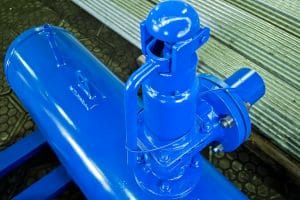 The way companies and technology designers have approached thermal management has changed dramatically over the years. In many cases, one of the greatest of those advancements has been the advent of phase-change cooling, which employs the natural properties of an eco-friendly cooling fluid to rapidly and efficiently transfer electrical waste heat. Phase-change cooling involves absorbing waste heat in a way that doesn’t allow for any rise in temperature within an electrical enclosure, and then transferring that heat to be dissipated safely elsewhere.
The way companies and technology designers have approached thermal management has changed dramatically over the years. In many cases, one of the greatest of those advancements has been the advent of phase-change cooling, which employs the natural properties of an eco-friendly cooling fluid to rapidly and efficiently transfer electrical waste heat. Phase-change cooling involves absorbing waste heat in a way that doesn’t allow for any rise in temperature within an electrical enclosure, and then transferring that heat to be dissipated safely elsewhere.
How phase-change cooling works
Phase-change cooling is one of the more common heat transfer methods used by modern heat exchangers. The process involves utilizing the latent heat of vaporization of a cooling fluid, such as water, to allow for rapid heat absorption and transfer with minimal energy or mechanical apparatus. As the fluid absorbs the waste heat that electrical components generate, it eventually evaporates, becoming much less dense and easier to flow through the heat exchanger. When it reaches a heat depository, such as a heat sink, the fluid can release the heat and condense back to liquid, then continue its cooling loop.
A comparison with traditional cooling methods
The reason phase-change cooling has become so popular is because of its high level of efficiency and cost-effectiveness when compared to traditional cooling methods. For example, the process of transferring waste heat based on a fluid’s natural properties is much less cost intensive than generating chilled air and using it to combat the waste heat. Such traditional cooling solutions require the use of chemicals that could be harmful to the environment and mechanical equipment that can often break down and require frequent maintenance. With the advent of heat exchangers and their use of phase-change cooling, companies can more efficiently handle their electrical thermal management needs.
The advantages of phase-change electrical cooling
When companies begin utilizing more efficient thermal management solutions, such as phase-change based heat exchangers, they experience a wide range of benefits associated with more efficient electrical cooling. For example, in addition to requiring less energy and less complicated equipment, heat exchangers that use phase-change cooling to transfer waste heat are also more eco-friendly, allowing companies to more easily enact more environmentally sound processes.
For more information about how phase-change cooling transforms thermal management, call Noren Thermal Solutions in Taylor, TX, at 866-936-6736.







